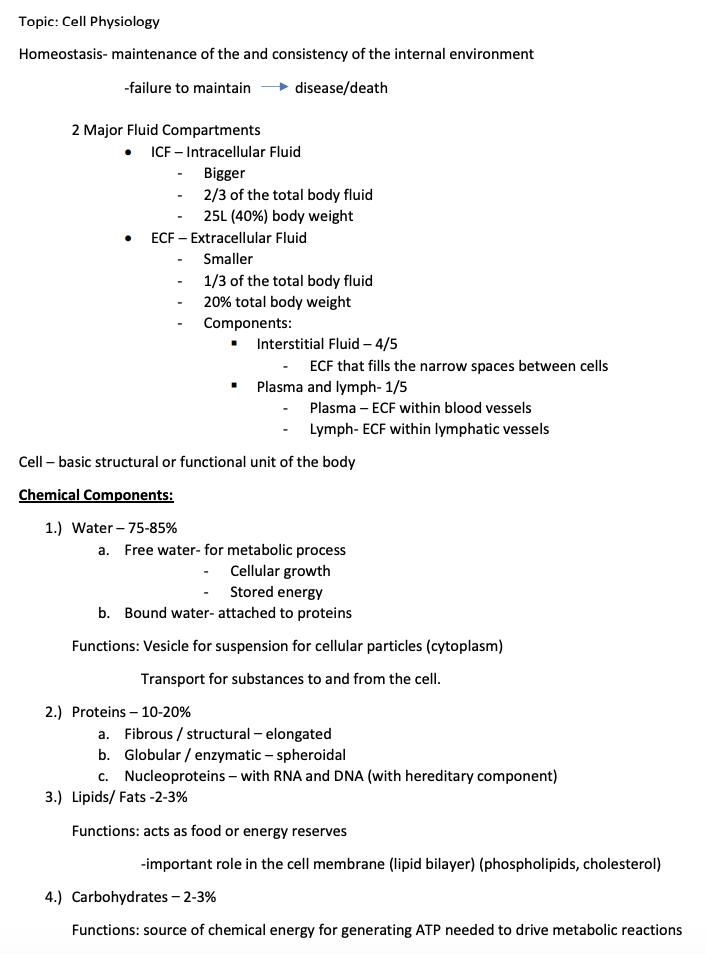Introduction to Cell Physiology (Grade A+)
Summary:
The text provides an overview of cell physiology, covering topics such as homeostasis, fluid compartments, chemical components of cells, cell parts, and active vs. passive transport. It emphasizes the significance of maintaining the internal environment and introduces two major fluid compartments: Intracellular Fluid (ICF) and Extracellular Fluid (ECF). It delves into the functions of water, proteins, lipids, carbohydrates, and ions within the cell. Additionally, the text explains the functions of various cell components like the nucleus, cytoplasm, ribosomes, mitochondria, lysosomes, Golgi apparatus, microtubules, cilia, and flagella. The cell membrane’s importance and structure are also highlighted, along with a comparison of active and passive transport mechanisms. The concept of osmosis, osmotic pressure, bulk flow, and filtration are also briefly discussed.
Excerpt:
Introduction to Cell Physiology
Topic: Cell Physiology
Homeostasis- maintenance of the and consistency of the internal environment
-failure to maintain disease/death
2 Major Fluid Compartments
• ICF – Intracellular Fluid
– Bigger
– 2/3 of the total body fluid
– 25L (40%) body weight
• ECF – Extracellular Fluid
– Smaller
– 1/3 of the total body fluid
– 20% total body weight
– Components:
▪ Interstitial Fluid – 4/5
– ECF that fills the narrow spaces between cells
▪ Plasma and lymph- 1/5
– Plasma – ECF within blood vessels
– Lymph- ECF within lymphatic vessels
Cell – basic structural or functional unit of the body
Chemical Components:
1.) Water – 75-85%
a. Free water- for the metabolic process
– Cellular growth
– Stored energy
b. Bound water- attached to proteins
Functions: Vesicle for suspension of cellular particles (cytoplasm)
Transport for substances to and from the cell.
2.) Proteins – 10-20%
a. Fibrous/structural – elongated
b. Globular/enzymatic – spheroidal
c. Nucleoproteins – with RNA and DNA (with hereditary component)
3.) Lipids/ Fats -2-3%
Functions: acts as food or energy reserves
-an important role in the cell membrane (lipid bilayer) (phospholipids, cholesterol)
4.) Carbohydrates – 2-3%
Functions: source of chemical energy for generating ATP needed to drive metabolic reactions
5.) Salt/ions/ electrolytes – 1%
Function: Important for metabolic activities
a.) Cations – (+) charged
b.) Anions – (-) charged
***PISO – Potassium In Sodium Out
K – major cation intracellularly
Na -major cation extracellularly
Cl- extracellular anion


Reviews